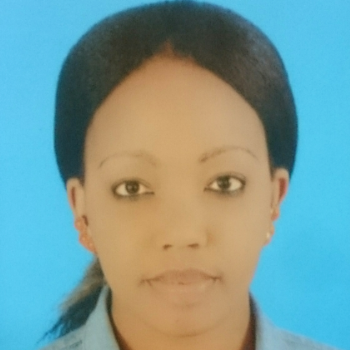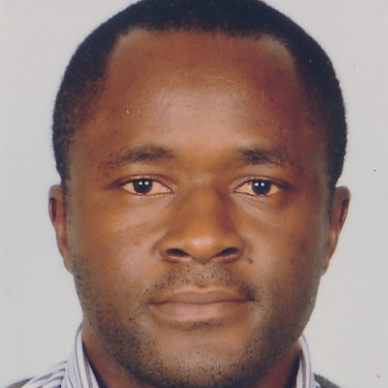International Journal of Information Technology and Computer Science (IJITCS)
IJITCS Vol. 9, No. 12, 8 Dec. 2017
Cover page and Table of Contents: PDF (size: 742KB)
Web Services for Transforming e-Cultural Heritage Management in Tanzania
Full Text (PDF, 742KB), PP.52-63
Views: 0 Downloads: 0
Author(s)
Index Terms
e-Cultural Heritage, Tourism, Web Mapping, Web services, Crowdsourcing, Tanzania
Abstract
Globally, applications of Information and Communication Technologies (ICTs) in services management and delivery have positively transformed various sectors of economies. Similar transformations have been witnessed in Tanzania, where mobile money and the Internet have transformed the way businesses are done. However, the transformations have not taken place across all sectors of the Tanzanian economy with some sectors lagging further behind than others. Cultural heritage sector, in particular, has been slow in leveraging ICT to transform the delivery of services. The sector is characterized by poor consumption of heritage sites and artworks, neglect, low publicity, weak branding, to mention a few. Although the achieved level of skills in Internet and Web have enabled the proliferation of many useful Websites which offer services to the public, information gathering remains a huge challenge considering the size of the country, its cultural heritage from 126 tribes and the vast nature reserves.
We have investigated the usefulness of Web services in promoting mechanisms to gather and disseminate information about e-Cultural Heritage in Tanzania. In our investigation, we analyzed stakeholders of the sector and realized that Web services can be used to foster mechanisms within specific groups using crowdsourcing techniques. We then proposed specific Web services that cater for information flow chain of Tanzanian's artwork industry and developed an e-cultural heritage portal for demonstration.
We tested the system with a sample of selected stakeholders and the initial results indicated that the locals’ readiness for such a system is strong enough and that apart from developers benefiting from the Web services, accessibility of information and stakeholders’ visibility will improve.
Cite This Paper
Gloriana Joseph Monko, Khamisi Kalegele, Dina Machuve, "Web Services for Transforming e-Cultural Heritage Management in Tanzania", International Journal of Information Technology and Computer Science(IJITCS), Vol.9, No.12, pp.52-63, 2017. DOI:10.5815/ijitcs.2017.12.07
Reference
[1]R. Bibi, M. Jannisar, and M. Inayet, “Quality Implication for Prognoses Success in Web Applications,” Int. J. Mod. Educ. Comput. Sci., vol. 8, no. 3, pp. 37–44, 2016.
[2]R. G. Connolly, D., Olsen, M. D., Moore, “The internet as a distribution channel.,” in Cornell Hotel and Administration Quarterly, 1998, p. 39(4), 43-54.
[3]K. Taghandiki, A. Zaeri, and A. Shirani, “A Supervised Approach for Automatic Web Documents Topic Extraction Using Well-Known Web Design Features,” Int. J. Mod. Educ. Comput. Sci., vol. 8, no. 11, pp. 20–27, 2016.
[4]R. M. Alguliyev and M. Rasmiyya Sh, “Information Culture Formation as the Most Promising Direction of Individual`s General Culture,” Int. J. Mod. Educ. Comput. Sci., vol. 7, no. 3, pp. 54–61, 2015.
[5]J. Glentzes, “An e-culture – e-museums environment for common citizens and disabled individuals,” Int. J.of Digital Culture and Electronic Tourism, vol. 1, no. 4, 2009.
[6]F. M. Go, R. M. Lee, and A. P. Russo, "E-Heritage in the Globalizing Society: Enabling Cross-Cultural Engagement Through ICT," Inf. Technol. Tour., vol. 6, no. 1, pp. 55–68, 2003.
[7]UNESCO, “UNESCO World Heritage Center - World Heritage List,” 2016. [Online]. Available: http://whc.unesco.org/en/list/. [Accessed: 13-Nov-2016].
[8]Ministry of Communications Science and Technology - the United Republic of Tanzania, "Research Priorities for Tanzania 2015 -2020,", United Republic of Tanzania, 2015.
[9]C. E. P. Armir Bujari, Matteo Ciman, Ombretta Gaggi, “Using Gamification to Discover Cultural Heritage Locations from Geo-tagged Photos,” vol. 21, no. 2, p. pp 235–252, 2017.
[10]B. Vodopivec, R. Eppich, and R. Žarni, “Cultural Heritage Information Systems State of the Art and Perspectives,” In Euro-Mediterranean Conference, Springer, Cham, pp. 146–155, 2014.
[11]R. Spiegel, “3 Ways to Benefit From Social Media Crowdsourcing,” 2011. [Online]. Available: http://www.socialmediaexaminer.com/3-ways-to-do-social-media-crowdsourcing/. [Accessed: 19-Jul-2017].
[12]G. Barbier and R. Zafarani, “Maximizing Benefits from Crowdsourced Data,” Comput. Math. Organ. Theory, vol. 18, no. 3, pp. 257–279, 2012.
[13]E. Bertacchini and F. Morando, “The Future of Museums in the Digital Age: New Models of Access and Use of Digital Collections,” no. 5, pp. 1–14, 2011.
[14]T. Rochelle, “Travel & Tourism economic impact 2015 Tanzania,” The authority on world travel & tourism, 2015.
[15]A. S. Drigas, L. G. Koukianakis, and J. G. Glentzes, “A dynamical system for e-culture services,” WSEAS Trans. Syst., vol. 5, no. 1, pp. 125–130, 2006.
[16]S. McDonough, J. P., Olendorf, R., Kirschenbaum, M., Kraus, K., Reside, D., Donahue, R., ... & Rojo, “Preserving Virtual Worlds Final Report,” Library (Lond)., p. 195, 2010.
[17]A. Meligy, E. Elabd, and S. Kotb, “Web Services Privacy Preserving Based on Negotiation and Certificate Authorities,” Int. J. Mod. Educ. Comput. Sci., vol. 8, no. 10, pp. 49–55, 2016.
[18]S. Choi et al., “A framework for ensuring consistency of Web Services Transactions,” Inf. Softw. Technol., vol. 50, no. 7–8, pp. 684–696, 2008.
[19]M. S. Reed, A. Graves, N. Dandy, H. Posthumus, K. Hubacek, J. Morris, C. Prell, C. H. Quinn, and L. C. Stringer, “Who ’ s in and why ? A typology of stakeholder analysis methods for natural resource management,” J. Environ. Manage., vol. 90, no. 5, pp. 1933–1949, 2009.
[20]I. Bakari, “Culture and Creative Industries in Tanzania: A Plan for Strategic Action,” Dar es Salaam, 2012.
[21]UNESCO, “Myanmar UNESCO Country Programming Document 2013-2015,” Dar es Salaam, 2011.
[22]NSGRP, II, “National Strategy for Growth and Reduction of Poverty,” 2010.
[23]Hare, M., & Pahl-Wostl, C. (2002). Stakeholder Categorisation in Participatory Integrated Assessment Processes. Integrated Assessment, 3(1), 50–62. https://doi.org/10.1076/iaij.3.1.50.7408
[24]A. L. Lemos, F. Daniel, and B. Benatallah, “Web Service Composition: A Survey of Techniques and Tools,” ACM Comput. Surv., vol. 48, no. 3, pp. 1–41, 2015.
[25]Hadley, M. J, “Web Application Description Language (WADL)”. Search (Vol. 12). Retrieved from Retrieved from https://wadl.java.net/wadl20061109.pdf, 2006
[26]B. Sun, “A multi-tier architecture for building RESTful Web services,” IBM Dev. Work., pp. 1–7, 2009.


